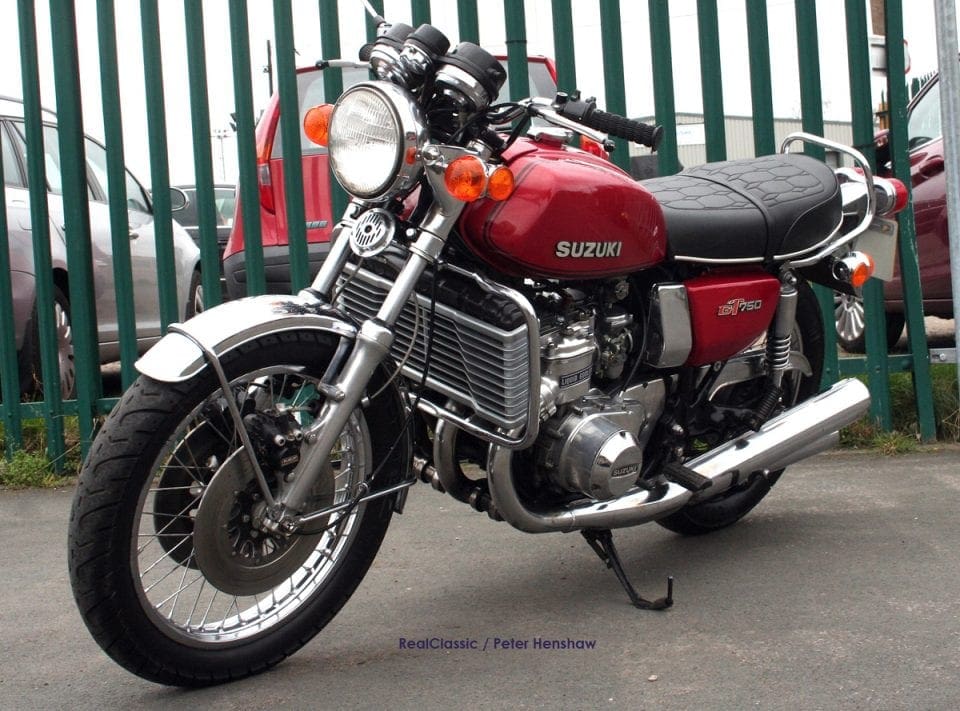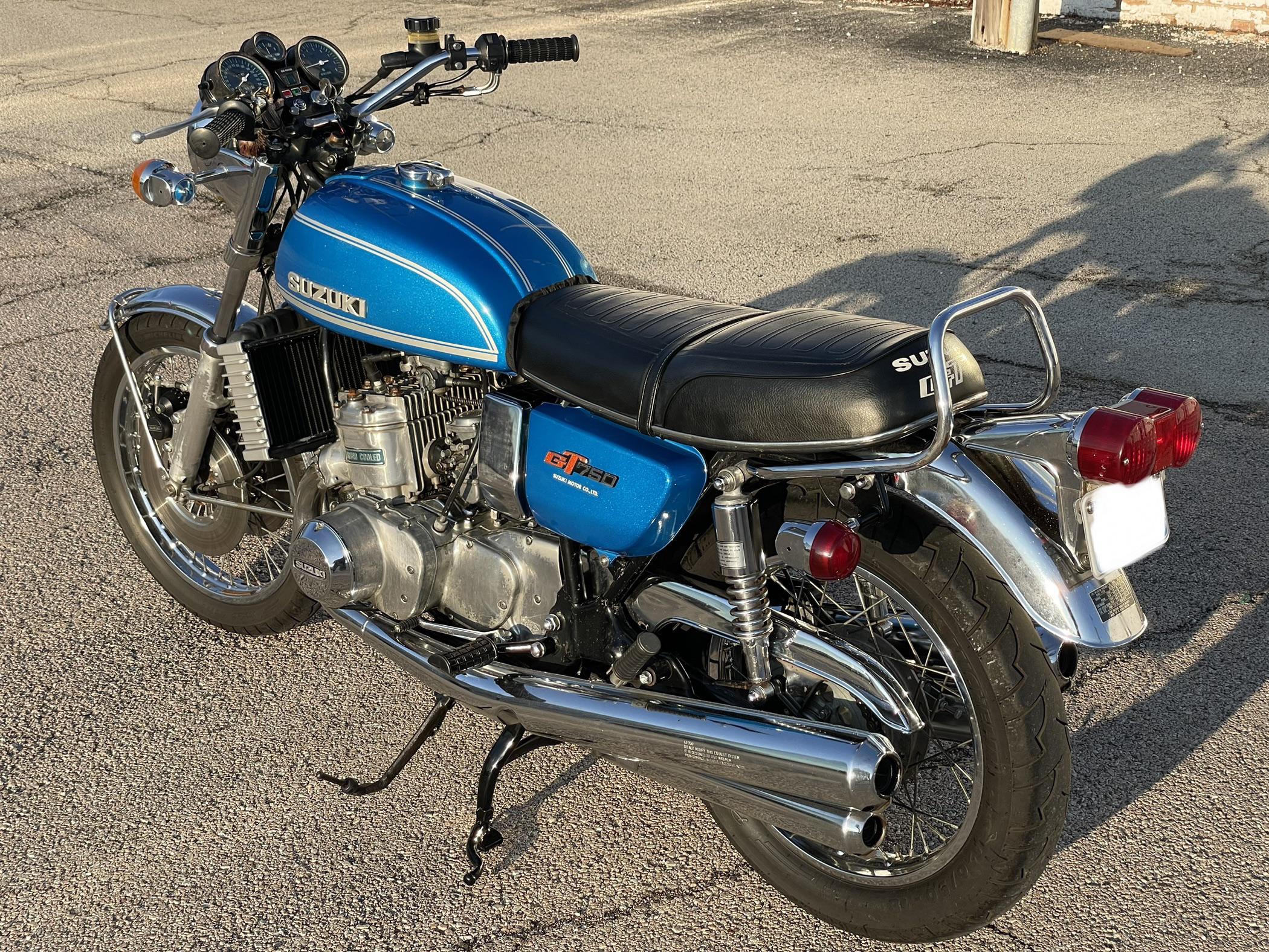Alright, so let me tell you about this Suzuki GT750 I’ve been wrestling with. It wasn’t exactly a showroom piece when I got my hands on it, more like a forgotten relic someone left to die in a shed. But you know me, I can’t resist a challenge, especially when it’s a classic two-stroke beast like the “Water Buffalo.”

Getting Started – The Messy Beginning
First thing I did was drag it into my garage. The smell alone, a mix of old gas, rust, and mouse droppings, told me I was in for a long haul. I spent a good afternoon just staring at it, trying to figure out where to even begin. It was complete, mostly, but everything was either seized, rusted, or just plain knackered.
The teardown was next. Man, that was a fight. Every nut and bolt seemed to have a personal vendetta against my wrenches. I swear, I used more penetrating oil on this thing than it probably used two-stroke oil in its entire life. I took photos of everything, bagged and tagged all the bits. You think you’ll remember where everything goes, but trust me, you won’t. Especially not when a project drags on for months, or even years.
The Heart of the Beast – That Three-Cylinder Engine
Then came the engine. The legendary GT750 triple. I knew this was going to be the main event. Getting it out of the frame wasn’t too bad, but once it was on the bench, the real fun began. I pulled the heads and cylinders. The bores weren’t terrible, but they definitely needed some love. Pistons looked okay-ish, but I figured if I’m in this deep, might as well do it right.
So, the hunt for parts started. Finding bits for these old girls isn’t like popping down to the local auto store. It’s a global treasure hunt. I spent hours, days, weeks scouring forums, eBay, and calling up specialists. You find guys tucked away in little workshops who know these engines inside out. They’re usually grumpy but worth their weight in gold.
- New pistons and rings were sourced.
- Crank seals, oh boy, definitely needed replacing. That’s a must on these two-strokes.
- The crankshaft itself, I sent that off to a specialist to get checked and rebuilt. Not cheap, but crucial.
Putting the engine back together was slow and methodical. Torque wrenches, assembly lube, checking clearances – you name it, I did it. I wanted this thing to run sweet when it was all said and done.

Frame, Paint, and All That Jazz
While the engine parts were off being machined or shipped, I turned my attention to the frame. It was solid, thankfully, no major rust-throughs. I stripped it bare, cleaned off all the gunk, and gave it a fresh coat of black paint. Nothing fancy, just good old rattle can stuff. It’s a rider, not a show queen, that’s my philosophy.
The bodywork was another story. The tank had a few dings, side panels were scratched. I’m no painter, so I did my best to prep it and got a mate who’s handy with a spray gun to lay down the color. Went for a classic Suzuki blue. Looks pretty decent, if I do say so myself.
The Dreaded Electrics and Carbs
Now, let’s talk about wiring. If there’s one thing that makes me want to throw tools across the garage, it’s old bike electrics. The loom on this GT750 looked like a bowl of spaghetti that had been attacked by a family of angry squirrels. I spent countless evenings with a multimeter and a wiring diagram that looked like ancient hieroglyphics. Replaced a bunch of crusty connectors, fixed some frayed wires. It’s tedious work, but you gotta do it.
And then the carburetors. Three of them. Mikunis. They were gummed up something fierce. Stripped them down completely, soaked them in cleaner, blew out every passage with compressed air. New jets, new float needles, new gaskets. Getting them synchronized later on, that’s always a fun game of patience. It’s like trying to get three toddlers to sing in harmony.
Putting It All Back Together (and the Moment of Truth)
Slowly, painstakingly, it started to look like a motorcycle again. Bolting on the freshly painted tank, fitting the rebuilt engine back into the frame, connecting all those wires I’d cursed at. The exhaust system, all three pipes, got a good polish. New chain, new sprockets, bled the brakes. The list goes on and on. It’s all those little jobs that seem to take forever.

Finally, the day came. Fuel in the tank (with a bit of premix, just to be safe for the first run), battery charged, fingers crossed. I turned the key, hit the starter… and it coughed. It sputtered. And then, with a cloud of blue smoke, it roared to life! Man, that sound. That glorious two-stroke triple symphony. There’s nothing quite like it. It wasn’t perfect, still needed a lot of tuning and fettling, but it was alive. I actually did a little victory dance right there in the garage.
It’s still an ongoing project, these things always are. There’s always something to tinker with, something to improve. But taking that first ride around the block, feeling that engine pull, smelling that sweet two-stroke haze – that’s what makes all the busted knuckles and late nights worth it. It’s a journey, this whole restoration gig, and I’m just glad to be on it with this old Suzuki.
